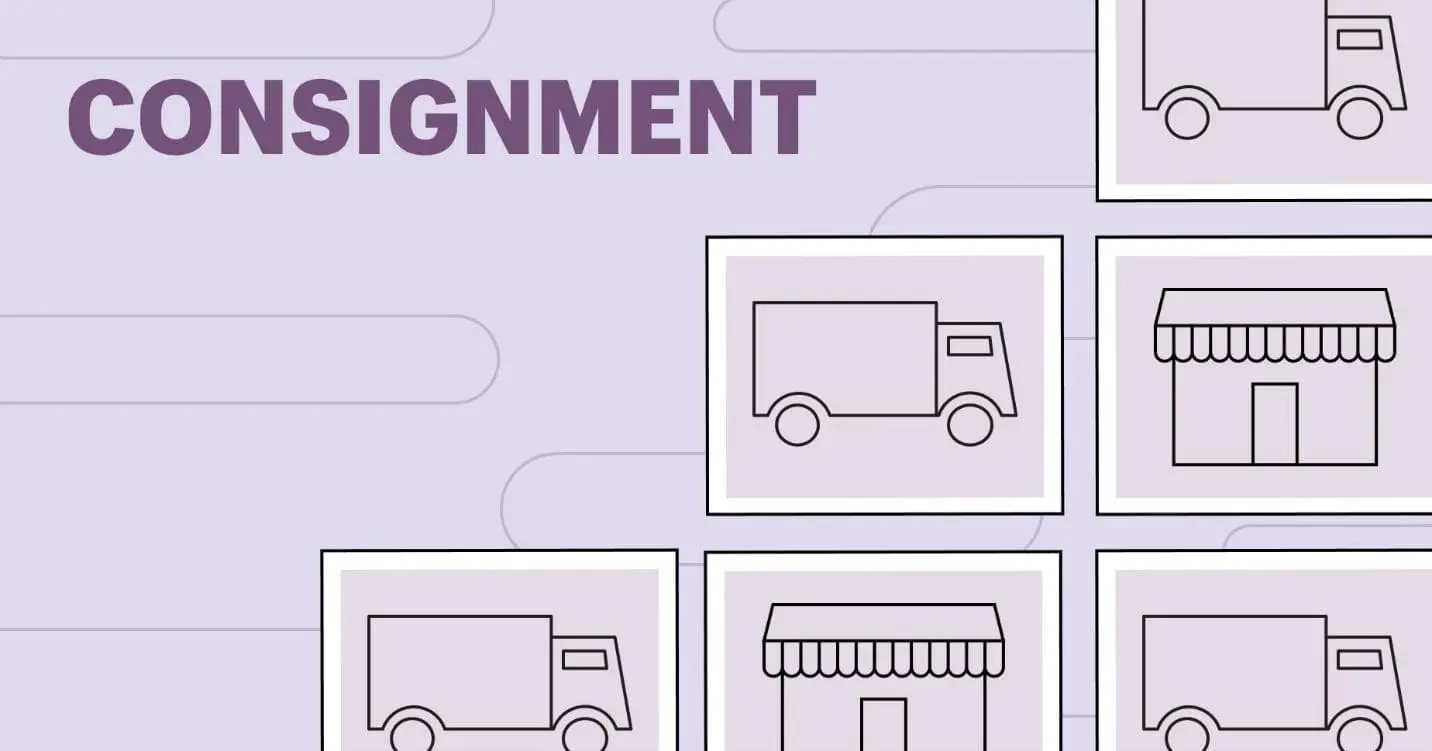For a small business owner, the retail environment can be quite a tricky market for establishing and launching your products. As a small business, you might face challenges like limited resources, human capital and reaching new customers. Thus, finding an alternative way of selling is necessary to have steady revenue. Businesses can utilize long-established stores and department stores to showcase their products and offload the risk that comes with the traditional retail market without any cost. The consignment selling strategy is efficient as it increases visibility and provides an opportunity for testing new markets with low resources before launching a significant launch.
What is Consignment Selling?
Consignment selling is a retail arrangement where a business (consignor) provides the product to the retailer (consignee) to sell their product. The retailer agrees to sell the consigned product in exchange for a predetermined commission or a percentage of the sale price. Contrary to the traditional wholesale or direct sales models, the consignor holds the ownership of the products until they are sold to the consumers. The consignor is paid for the product only after customers have purchased it, thus lowering the financial risk cash flow, and you can even consign surplus stock burdens that are characteristic of small businesses.
Choose your Consignment Partner.
Look out for retailers that align with your brand image, target audience and product offering. Consider factors such as location, foot traffic, demographics, and the overall reputation of the retailer. Conduct thorough research to ensure the potential consignment partner is a reputable business with a proven track record of fair dealing and timely payments. Understand your consignment partner to ensure a mutual benefit, and clearly communicate your product’s needs, expectations and presentation. Be prepared for feedback and complaints from the consignee and work on the negative aspects as quickly as possible.
Develop a Consignment Agreement.
Crafting a good consignment agreement is crucial so both parties can be guarded and the process can be seamless. The contract shall describe every critical piece of information, such as payment schedule, consignment fees or commission rates, legal liability, reporting conditions of inventory, and termination terms. In addition, you should consult with legal counsel to ensure the contract is enforceable and legally binding. The contract will prevent any mishaps in the future and ensure a safe net if a problem arises with the consignee.
Pricing and Margin Strategies
Appropriately pricing products is essential for good income and keeping up with the competition in the consignment business. Look out for issues like unit price, production costs and the trade commission or consignment charges that the retailer may charge. Furthermore, you can research your competitors’ pricing strategy and adjust your pricing accordingly to ensure accurate pricing and a reasonable profit margin.
Display your Products Correctly.
From the way you package your products to the way they are displayed on the shelves, how your products are presented and merchandised has a profound impact on their appeal and sales potential. Work closely together with your consignment partners to ensure that your products appear on the shelves in such a way that they attract the consumer’s attention and display unique traits and features. Ensure that the product descriptions are given, the pricing information is accurate, and all necessary care instructions are provided so that retail staff can market and sell your products affordably.
Inventory Management
Inventory management is crucial for small businesses to avoid significant losses and for a successful consignment. Track your consigned inventory using a detailed system that comprises product details, quantities, and locations, among other things. Often, check your stock records against reports you receive from your consignment partners to ensure that the information is accurate and that any differences are reported immediately. You could implement the inventory management software or the apps to give a more precise streamline and a lower risk for errors.
Evaluate Performance and Strategies.
Frequently evaluate the performance of your consignment partnerships and, if necessary, change your strategy. Review sales figures, inventory rotation, and profit margin to determine best-selling products, outlets, and partners. Use this information to modify your products, pricing strategies, and marketing tactics while keeping in mind that you should broaden the scope of your successful partnerships or, upon review, terminate underperforming ones.
Drawbacks
While consignment selling can be beneficial for small businesses, it is important to be aware of the strategy’s drawbacks and challenges.
- Low-profit margin: When you plan to sell your product or surplus through consignment, the consignee takes a substantial commission or percentage of the sales price. This allows you to recover a profit margin from your business.
- Lack of control: In consignment agreements, retailers have control over how your product is displayed and promoted in their store. So, before signing consignment deals, make sure you have a mutual understanding or agreement with the consignee.
- Risk of product damage and loss: While consignment agreements have liability over damaged and lost items, there is always a risk of mishaps happening. Make sure you can retrieve products that aren’t selling. There are many cases where business owners can’t get back their products for various reasons.
- Payment delays: In consignment selling, retailers typically pay the consignor after the products have been sold, which can lead to cash flow challenges, especially for small businesses with limited financial resources. The delay in payment can obstruct future business exploration or investments.
- Termination risks: Consignment contracts are generally short-term or ended by one of the parties with a short notice period. The lack of long-term security in the consignment business can make establishing a sustainable sales strategy difficult. It can disrupt your business operations in case the consignment ends abruptly.
Conclusion
By utilizing the above strategies, small businesses can leverage consignment selling to expand their reach and improve their revenue stream. However, the key to success at consignment selling is continuous work, the ability to adapt, and the willingness to create bonds with stores that you are close to and provide high-quality products and customer service.









Hi there! Just wanted to let you know how much I enjoyed reading this post. Your approach to the subject was unique and informative. It’s clear that you put a lot of effort into your writing. Keep up the great work, and I can’t wait to see what else you have in store.
Excellent post! Your insights on this topic are very valuable and have given me a new perspective. I appreciate the detailed information and thoughtful analysis you provided. Thank you for sharing your knowledge and expertise with us. Looking forward to more of your posts.
Hello! I wanted to drop by and say that I really enjoyed this blog post. Your writing is always so clear and concise, and you have a talent for making complex topics easy to understand. Thank you for sharing your insights with us. I’m looking forward to your next post!
Hey there! I wanted to take a moment to let you know how much I enjoyed this blog post. Your insights were incredibly helpful and thought-provoking. It’s clear that you put a lot of effort into your writing. Thank you for sharing your expertise with us. Looking forward to your next post!
Hello! I just wanted to say how much I appreciated this blog post. Your writing is always so engaging and informative. It’s clear that you have a deep understanding of the subject matter. Thank you for sharing your expertise with us. Looking forward to your next post!
Great post! I enjoyed reading it and learned a lot. Your writing style is engaging and easy to follow, and the information you provided was very helpful. Thank you for sharing your knowledge and expertise on this topic. Keep up the good work.
Hi there! I must say, this blog post really caught my attention. Your writing style is so captivating, and the way you presented the information made it easy to understand and enjoyable to read. Thank you for sharing your expertise on this topic. I’m eager to see what you write about next.
Greetings! I found this blog post to be incredibly informative and well-written. Your ability to break down complex topics into easy-to-understand language is truly a gift. Thank you for sharing your knowledge with us. I’m excited to read more of your posts in the future!
Thank you for this wonderful post! I found it very informative and engaging. Your thorough research and clear writing style made it easy to understand. I appreciate the time and effort you put into creating this valuable content. Keep up the excellent work.
Greetings! I found this blog post to be incredibly informative and well-written. Your ability to break down complex topics into easy-to-understand language is truly a gift. Thank you for sharing your knowledge with us. I’m excited to read more of your posts in the future!
Hello! I was thoroughly impressed by this blog post. Your depth of knowledge and ability to convey complex ideas in a simple manner is commendable. Thank you for shedding light on this topic. I’m looking forward to exploring more of your blog in the future.